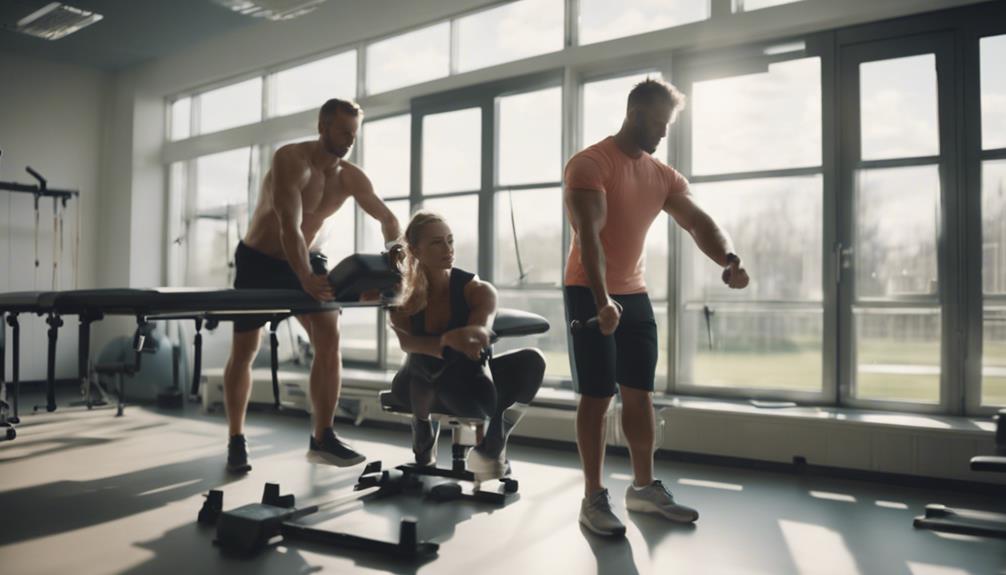Nose exercises have surged in popularity as individuals seek non-invasive ways to enhance their facial appearance. Advocates claim that these exercises can reshape the nose, reduce size, or improve overall symmetry, drawing interest from those who prefer to avoid surgical options. But what’s the reality behind these claims? Are nose exercises effective, or are they merely another beauty trend with little scientific backing? This article delves deep into the world of nose exercises to provide clarity on their effectiveness and potential benefits.
Understanding Nose Exercises: What Are They Exactly?
Nose exercises typically involve a series of movements aimed at shaping or toning the nasal area. These exercises may include pinching the nostrils, moving the nose in various directions, or using fingers to apply pressure to specific areas. The goal is often to achieve a more refined or lifted appearance without the need for surgery. Many proponents believe that by engaging the muscles around the nose, they can promote a more aesthetically pleasing shape.is deadlift a leg or back exerciseWhat Is A Halfway House For Mental HealthHow Do Health Insurance Agents Get Paid
The concept of nose exercises is rooted in the broader idea of facial exercises, which have been promoted for various reasons, including anti-aging benefits. These exercises are often easy to perform and can be integrated into daily routines, making them appealing to a wide audience. However, the effectiveness of these exercises in achieving significant change in nasal structure remains a point of contention.
The Science Behind Nose Exercises and Facial Muscles
To understand the potential impact of nose exercises, it’s essential to consider the anatomy of the face. The nose consists of bone, cartilage, and soft tissue, but most of the structure is supported by the underlying cartilaginous framework. While facial muscles do play a role in expression and movement, they do not directly influence the shape of the nose as they do with other areas of the face.
Current scientific literature has not provided robust evidence that exercising the muscles around the nose can lead to structural changes. The notion that specific exercises can reshape cartilage and bone is largely unsupported. While strengthening facial muscles can improve overall facial tone, the results may not translate to noticeable changes in the nose itself.
Common Claims: Do Nose Exercises Really Improve Shape?
Many advocates of nose exercises claim that consistent practice can lead to a slimmer, more defined nose. Some suggest that these exercises can help lift the nasal tip or reduce the appearance of a bulbous nose. These assertions are often accompanied by before-and-after photos, which can be compelling but may not provide a complete picture of the effectiveness of such exercises.
However, claims about the transformative power of nose exercises are often anecdotal and lack scientific validation. Results may vary significantly from person to person, and what works for one individual may not yield the same results for another. Therefore, while some may experience minor changes, the expectation of a dramatically altered nose shape through exercises alone is likely unrealistic.
Expert Opinions: What Do Professionals Say About Them?
When questioned about the efficacy of nose exercises, many professionals, including dermatologists and plastic surgeons, express skepticism. They often emphasize that the nose’s structure is largely determined by genetics and cannot be altered significantly through exercise. Surgical options, such as rhinoplasty, remain the most effective way to achieve desired changes in the nasal shape.
Experts also caution against the potential for injury when performing nose exercises incorrectly. The delicate nature of the nasal framework makes it susceptible to damage, and professionals recommend against attempting any method that could lead to harm. Overall, professional opinions lean toward advising individuals to approach nose exercises with caution and realistic expectations.
Anecdotal Evidence: Success Stories and Testimonials
Despite the lack of scientific backing, many individuals share personal success stories regarding nose exercises. Some report feeling more confident after incorporating these exercises into their routines, claiming they observe slight improvements in their nasal appearance. Testimonials often emphasize the convenience and low cost associated with nose exercises, making them an appealing option for those hesitant about surgical procedures.
However, it’s important to note that anecdotal evidence is subjective and may not reflect the experiences of the general population. Psychological factors, such as self-perception and confidence, play a significant role in how individuals interpret their results. While some may feel satisfied, others may find little to no change, illustrating the variability of outcomes.
Potential Benefits: Beyond Aesthetic Enhancements
Beyond aesthetic improvements, nose exercises may offer incidental benefits. Engaging in regular facial exercises can promote better blood circulation and may contribute to overall skin health. Additionally, for individuals who are conscious of their nasal appearance, any positive changes—no matter how minor—can have a significant impact on self-esteem and confidence.
Furthermore, nose exercises can encourage mindfulness and self-care practices. Taking time to focus on one’s appearance can enhance an individual’s relationship with their body and promote a healthy self-image. While these outcomes may not be directly related to the physical changes in the nose, they contribute to a more holistic approach to personal well-being.
Risks and Considerations When Performing Nose Exercises
Nose exercises are generally considered low-risk; however, there are potential downsides. Improper technique can lead to discomfort or even injury, particularly if excessive force is used. Individuals should ensure they perform any exercises gently and avoid movements that cause pain or strain.
Additionally, people with certain nasal conditions or those who have undergone previous surgical procedures should consult a healthcare professional before starting nose exercises. It’s essential to be aware of the limitations and risks associated with any self-directed physical manipulation of the body, especially in delicate areas such as the face.
In conclusion, while nose exercises are a popular topic among beauty enthusiasts seeking non-invasive options for nasal enhancement, their effectiveness remains uncertain. The science does not strongly support the notion that specific exercises can significantly alter the shape or size of the nose. Expert opinions caution against placing too much hope in these methods, highlighting the importance of realistic expectations. However, for some individuals, the practice may offer psychological benefits and a sense of agency over their appearance. Ultimately, those considering nose exercises should weigh the potential advantages against the lack of substantiated results and approach the topic thoughtfully.


